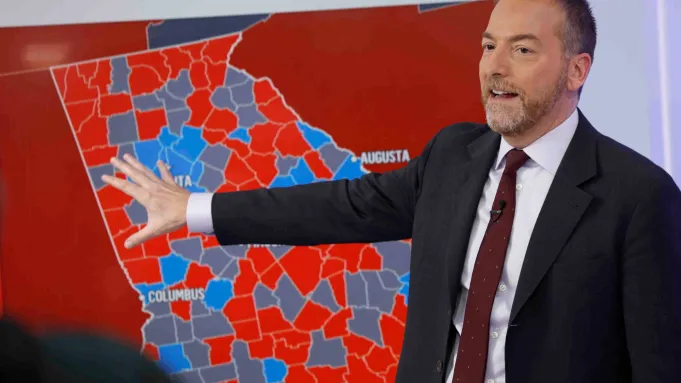The journey from speculation to information can be a twisty one.
Many of the nation’s biggest TV-news outlets started their Tuesday-evening Election Night broadcast under the premise that Republicans were about to take significant share of Congress from their Democratic rivals. Within the first ten minutes of CBS News’ coverage, for example, Major Garrett and Anthony Salvanto unveiled a graphic projecting that the majority of races for seats in the U.S. House would lean red. During Fox News Channel’s coverage, opinion host Jesse Watters joined Bret Baier and Martha MacCallum to tell them he was hearing “good anecdotes” about voters in pivotal Western states.
Just before midnight, however, NBC News raised eyebrows by telling viewers it was indeed possible that the Republicans might just end up with only a few extra House seats, narrowing the party’s ability to govern. Within an hour, most major outlets were projecting victory for Pennsylvania Democrat John Fetterman, in a race many thought he might just lose, and suggesting just after 2 a.m. that Georgia’s Senate race might head into a runoff.
Last night’s coverage provided just the latest example of the broadening gap between polls of voters’ intentions and how citizens actually lean when they get to the booth. Several prominent media outlets were caught unaware by President Trump’s victory in 2016 and by the inability of Democrats to make more inroads in Congress as President Biden took the White House in 2020.
“Lots of information is coming in, but It’s not coming in with the rapidity that centrally Republicans had hoped, they thought that would have some big wins early in the night that would show the size of their victories,” noted John Dickerson on CBS last night.
The networks were counting on a compelling narrative. Midterm elections often represent that point in their business cycle when viewers start to pay increased attention to the news again. Those numbers typically fall after a presidential election, and the networks see the midterms as a natural starting point to build back audience as the race for the White House starts to take shape. Midterm results will place into sharp relief how the White House, Democrats and Republicans are likely to fare over the next two years and lay bare the terrain presidential candidates will have to navigate.
But the TV anchors who started the evening had different ideas of what tales to tell. Many of them had new “desks” assigned to monitor voting procedures and irregularities. CBS launched a “Democracy Desk.” CNN assigned anchor Brianna Keilar to keep tabs on voting across the nation. There was a hiccup in Arizona, where irregularities in Maricopa County caused arguments about keeping certain voting sites open (but the problem was solved well before voting ended).
After the 2020 election, filled with new wrinkles due to people mailing in ballots and voting early while coping with the coronavirus pandemic, the networks had little choice. “We have to cover very robustly the voting process,” says CNN’s David Chalian, “because viewers will often see vote tallies for different races change noticeably over the course of an evening, sowing mistrust and doubt.” Because different states have varied rules about when and how to count early votes, the networks need to “explain to our audience in real time” why the counts are changing. Indeed, many early tallies that seemed to go to Democrats like Val Demmings in Florida or Cheri Beasley in North Carolina tipped decisively in favor of their Republican rivals, Marco Rubio and Ted Budd.
(Excerpt) Read more in: Variety





